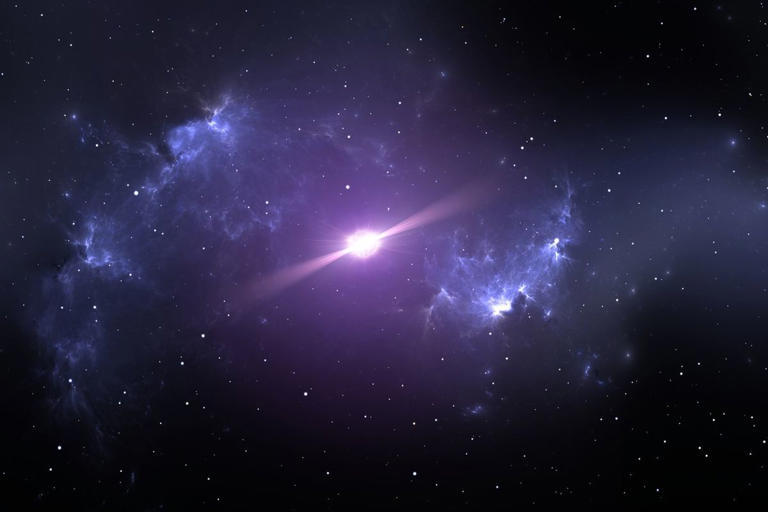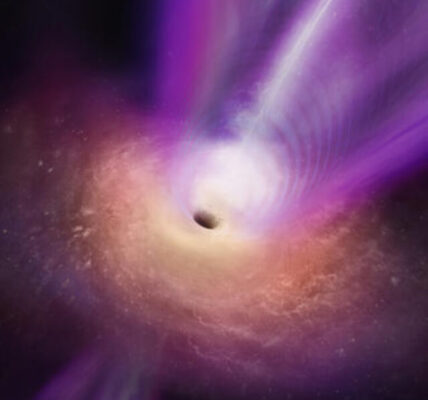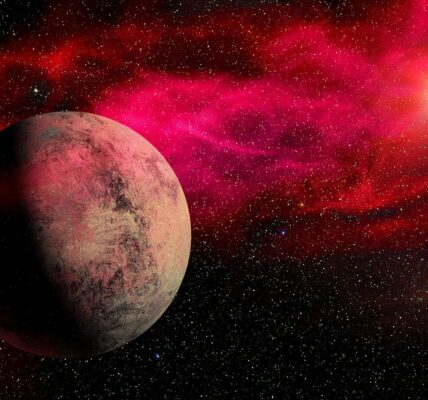Radiolytic Habitable Zone Alien Life could exist far beyond the Goldilocks zone, powered by cosmic rays under ice and oceans on planets and moons once considered inhospitable.

© DrPixel via Getty Images
What is Radiolytic Habitable Zone Alien Life?
When we think about life on other planets, we usually focus on worlds inside the “Goldilocks zone,” the area around a star where temperatures are just right for liquid water. But a new study introduces the concept of Radiolytic Habitable Zone Alien Life, suggesting that life could survive even in places without sunlight. This exciting idea is based on the energy provided by cosmic rays, which can power life deep beneath the surface of icy planets and moons.
The “Radiolytic Habitable Zone” refers to regions where cosmic radiation breaks apart water molecules, releasing energy that could support life. Unlike traditional habitable zones that rely on sunlight, these zones could exist in dark, cold places, as long as there is subsurface water.
Cosmic Rays: The Hidden Power Source
The study about Radiolytic Habitable Zone Alien Life explains how cosmic rays, which are high-energy particles traveling through space, can be an alternative energy source for life. On Earth, our thick atmosphere protects us by blocking most of these rays, but worlds with thinner atmospheres, like Mars, or icy moons like Europa and Enceladus, are not so lucky.
When they interact with water molecules, they cause a process called radiolysis. This reaction splits water into hydrogen and oxygen, releasing electrons that can drive chemical reactions, potentially supporting Radiolytic Habitable Zone Alien Life.
Radiolytic Habitable Zone Alien Life on Mars, Europa, and Enceladus
The researchers studied whether Radiolytic Habitable Zone Alien Life could exist on Mars, Jupiter’s moon Europa, and Saturn’s moon Enceladus. While the surfaces of these worlds are harsh and frozen, beneath the surface lies water ice or even liquid oceans. The study used computer models to see how much energy cosmic rays could provide below the surface.
The findings were fascinating. Cosmic rays could indeed reach subsurface layers, energizing the environment enough to support simple life forms. Of the three worlds studied, Enceladus showed the highest potential for supporting Radiolytic Habitable Zone Alien Life, thanks to its thinner icy crust, followed by Mars and then Europa.
A Shift in the Search for Alien Life
Until now, scientists focused mainly on planets that receive sunlight and are warm enough to have liquid water on the surface. But Radiolytic Habitable Zone Alien Life suggests that life could exist in cold, dark places, as long as cosmic rays provide the energy needed for survival.
Astrobiologists are now considering the possibility that many more worlds, including those outside the traditional habitable zone, could host life beneath their surfaces. The Radiolytic Habitable Zone Alien Life concept opens new doors, showing that life doesn’t always need sunlight.
Future Missions to Explore Radiolytic Habitable Zone Alien Life
The idea of Radiolytic Habitable Zone Alien Life comes at a time when space agencies are preparing to explore these icy worlds. NASA’s Europa Clipper mission is set to launch soon to study Europa’s icy crust and ocean beneath. Similarly, future missions aim to investigate the plumes of water shooting from Enceladus to search for signs of life.
Telescopes like the Atacama Large Millimeter/submillimeter Array (ALMA) will also play a vital role in searching for chemical clues of life on distant exoplanets. These efforts will now include a focus on the Radiolytic Habitable Zone Alien Life concept, expanding the regions where scientists believe life could be found.
Radiolytic Habitable Zone Alien Life Beyond Our Solar System
While this study focuses on Mars, Europa, and Enceladus, the idea of Radiolytic Habitable Zone Alien Life has far-reaching implications. If cosmic rays can power life beneath ice and rock, then similar conditions might exist on exoplanets orbiting distant stars, or even on rogue planets drifting through space without a star.
This concept suggests that the universe could be teeming with life in hidden places we haven’t yet considered. Worlds that were once dismissed as too cold or too dark could, in fact, be thriving with microbial life deep below their surfaces, sustained by the constant energy of cosmic rays.
A New Era in Astrobiology
The discovery of Radiolytic Habitable Zone Alien Life represents a major shift in astrobiology. The resilience of life on Earth, where organisms thrive in extreme conditions like deep-sea vents and underground caves, shows us that life is incredibly adaptable.
If Earth’s microbes can survive without sunlight, living off chemical energy in the dark, then Radiolytic Habitable Zone Alien Life might be doing the same on distant worlds. This changes our entire approach to exploring the cosmos and increases the chances of finding life beyond Earth.
Conclusion: The Expanding Horizons of Life’s Possibilities
The idea of Radiolytic Habitable Zone Alien Life challenges the traditional view of where life can exist. Cosmic rays, once considered a threat, might actually be the key to sustaining life in places far beyond the reach of sunlight. As upcoming missions explore icy moons and telescopes scan the skies, the chances of discovering life in these hidden zones are higher than ever.
By considering the energy provided by cosmic radiation, we are now looking at a universe filled with new possibilities. Radiolytic Habitable Zone Alien Life could be out there, quietly thriving beneath ice and rock, waiting to be discovered.
Related:
Black Hole Bounce Cosmology: 4 Astonishing Breakthroughs


